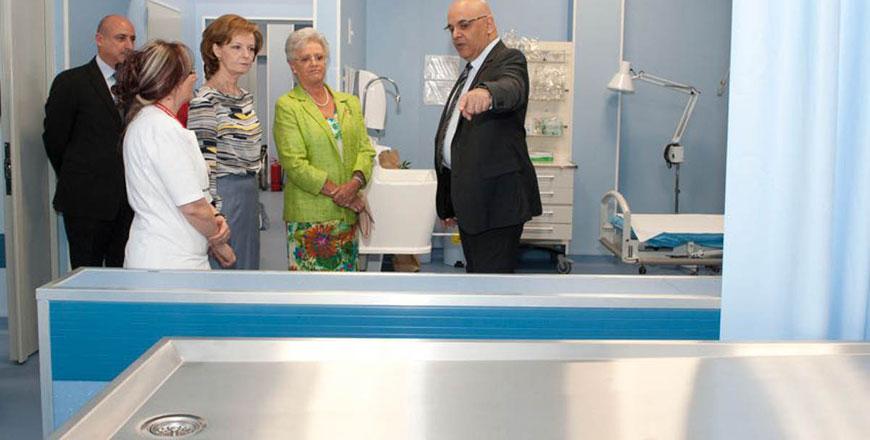You are here
Romania mining town Rosia Montana eyes UNESCO restart
By AFP - Jul 24,2021 - Last updated at Jul 24,2021
ROSIA MONTANA, Romania — High up in Romania’s Carpathians, some villagers are hoping their area’s unique Roman galleries will attract UNESCO world heritage status — a decision that would further stall a controversial gold mining project.
The site nestled in the Apuseni Mountains “contains the most significant, extensive and technically diverse underground Roman gold mining complex currently known in the world”, dating from the second century, according to ICOMOS, an advisory body of the UN agency.
But some Rosia Montana villagers worry that this heritage will be destroyed if the gold mining project of Canada’s Gabriel Resources — which would mean the levelling of four peaks — goes ahead.
“After years of extraction, there would only be a desert left here,” Sorin Jurca, himself a former miner, tells AFP.
UNESCO is expected to decide on Sunday whether to accord the Roman mines cultural heritage status, according to Romania’s culture ministry.
It is not clear what, if anything, the Romanian government will do if the area wins the status, but it would mean a further stumbling block for the mining project.
“The current mining proposal means that the integrity of the property is highly vulnerable,” one UNESCO document on Rosia Montana reads.
But not all locals are in favour of a positive UNESCO decision.
For mayor Eugen Furdui, it “won’t bring any benefits, only disadvantages”.
“Many people put their faith in a modern mining project so that they won’t have to go abroad for work,” Furdui tells AFP, hinting at the hundreds of workers the Canadian company said it would hire.
The seeds of discord were sown in the 90s when Gabriel Resources came to Rosia Montana with the intention of extracting 300 tonnes of gold and 1,600 tonnes of silver.
Its subsidiary, Rosia Montana Gold Corporation (RMGC), in which the Romanian state holds 20 per cent, received a mining concession in 1999.
But the project — including plans to use 12,000 tonnes of cyanide per year to separate gold from crushed rock — drew the ire of environmentalists and others.
With tens of thousands of people protesting against the project, Romania’s former left-wing government withdrew its support in 2013, and the project has so far failed to get the necessary environmental approval.
In 2016, Romania declared Rosia Montana a site of historical interest, granting it protection from mining activity — though conservationists say the protection under local law is not enough.
Meanwhile, Gabriel Resources has taken Romania before the World Bank’s International Centre for Settlement of Investment Disputes, seeking $4.4 billion (3.7 billion euros) in damages.
A verdict is expected at the end of 2022, but the company, contacted by AFP, does not rule out launching another legal case if Bucharest’s UNESCO bid, launched in 2017, is successful.
Among the locals fiercely opposed to the project is retired topographer Eugen Cornea.
“Only the Taliban destroy their vestiges,” the 70-year-old tells AFP.
“This valley would disappear”, swallowed by the ensuing reservoir of mining waste, he says as he sits on a mountain ledge, drawing a large arc with one hand over the area below.
“Two villages, three churches, one of which was built in 1720 — everything would disappear.”
The years of bitter dispute and stagnation have left deep marks on Rosia Montana.
In preparation for the mining work, RMGC bought many homes from villagers who then left so that those houses — splendid tall buildings with carved wooden doors — stand empty and now risk collapsing.
Supported by dozens of volunteers, archaeologist couple Claudia and Virgil Apostol have been restoring some of these old residences to their former splendour over the past ten years.
“These buildings can still be saved, but the more time passes the more difficult it will be,” Claudia Apostol says on the porch of an already restored parish house.
Tica Darie, who came to Rosia Montana in 2013 “full of dreams”, is also hoping to offer locals a future without mining.
“I found myself on a battlefield at that time,” says the 28-year-old, whose small business, “Made in Rosia Montana”, has recruited around 30 local women to knit socks, scarves and pullovers out of merino wool.
“I came here determined to do something and to succeed no matter what. And I think I did just that,” says Darie, adding that people are “tired” of debating the mining project and want to move on.
Related Articles
AMMAN – HRH Princess Muna on Thursday attended celebrations to mark Children’s Day in the Romanian capital Bucharest, the Jordan News Agency
AMMAN — Deputy Prime Minister and Minister of Foreign Affairs Nasser Judeh on Thursday conveyed a written message from His Majesty King Abdu
AMMAN — The National Electric Power Company (NEPCO) on Tuesday awarded the third tender to implement the Green Corridor project to an Indian












